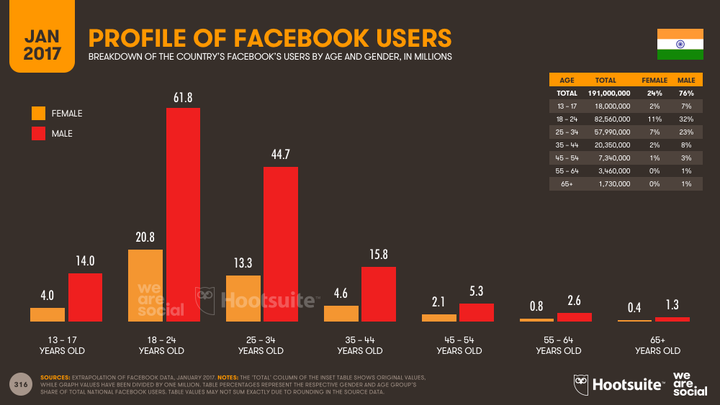
Millions of Indian men and women rely on online matrimonial sites to find a suitable match through arranged marriages. That’s not all, online dating, while being a relatively new trend, is also catching on in urban centres. However, the business of matching Indian men and women online has a serious problem that could grow worse in the coming years.
It appears women are not keen on using these sites and the men that sign up are finding it difficult to meet women who meet their expectations.
I saw this issue first hand!
Let me rewind to 2016. I launched Jodi Logik to help men and women create a marriage biodata. In about a year’s time, over 15000 people have created their marriage biodata using my site. They found my site mostly through search engines like Google. I did not target men or women separately through ads or other forms of paid promotions using social media.
When I looked at the customer data, only 32% of those that signed up in a 12-month period were women. This data has no relevance for my business as I don’t offer matchmaking services. But if I were to offer matchmaking services, the 7:3 ratio of male and female customers would annoy the largest chunk of my customer base (i.e. male) and probably creep out the female customers who receive a deluge of responses from anybody and everybody.
The last thing dating sites and matrimony sites want is a hoard of young men logging on to their sites only to log out disappointed. In fact, some of the dating sites shut shop or pivoted their business model precisely for the same reason.
Alarm bells started ringing in my mind and I decided to dig into the issue a little more. Luckily, I stumbled on data that told me that the lopsided sex ratio was not unique to my product alone.
Indian women are indeed scarce online
WomenWill is an initiative from Google that aims to provide tools for women to leverage the Internet. Google surveyed over 828 women in India (in the 18-55 years age group) on their Internet habits and here are some findings:
- 49% of women surveyed don’t see any reason to access the Internet
- 43% of women are not interested in anything that the Internet offers
- 42% need help or guidance to use the Internet
- 68% of the women who are not interested in using the Internet are not likely or uncertain about using the Internet in the future
The survey also highlighted some of the access barriers women faced.
According to the survey report,
Both users and non-users of Internet (women) are wary of undesirable content online. Other barriers include connection issues, affordability and time — many of our respondents said managing their household left little time for what’s perceived to be a leisure activity.
The report also highlights the problem of shared devices in a family and lack of privacy for women to use the Internet without being judged by the other family members.
Are there more reasons?
I felt that the Google WomenWill study only highlighted the symptoms of a malady. I was determined to dig through to the bottom of this issue. Next, I reviewed data on the overall internet penetration data in India and here is what I found.
According to the “Digital In 2017” report by We Are Social and Hootsuite, India has the lowest internet penetration among all major countries. All the hype about Digital India notwithstanding, India, with just 35% Internet penetration, trails countries such as Egypt and Nigeria!

The problem of a small base of Internet users in India is compounded by the shockingly huge online gender disparity. Case in point is the gender distribution of Facebook. Out of the 190 Million Facebook users, only 24% of the users are women!
It’s just not Facebook, other popular social media platforms face the same issue. The Observer Research Foundation studied 23350 tweets in an 8-day period to conclude that women in India are significantly underrepresented in political conversations in platforms like Twitter.
This lopsided Internet user data is a reflection of the real India
Sobering facts
I soon realised that the real issue is not just the adverse online gender ratio in India. It is the adverse gender disparity that women in India endure across the board in almost every social domain.
- According to the 2011 census, India has 943 females for every 1000 males in the population. This is just the start. Child sex ratio (the number of girls for every 1000 boys up to the age of 6 years) is actually declining!
- 82.14% of males are literate, while only 65.46% of females are literate as per the 2011 census. India has over 3.7 million girls out of school. The gender disparity in education eventually leads to fewer opportunities to get online.
- According to the UN, The average age of Indian women at the time of marriage is 20.2 years. This places the status of Indian women in the league of least developed nations in Africa. This data also explains the constraints women face in accessing the Internet as they are busy raising children or tending to the needs of the husband.
In summary, what started as a project to learn about a potential business challenge eventually led me to a fundamental issue that India needs to address, i.e.the issue of gender inequality. Unless and until gender disparity is tackled on a war footing, the dream of a prosperous and vibrant India will remain just that – a dream.
First published on Gender Matters.
